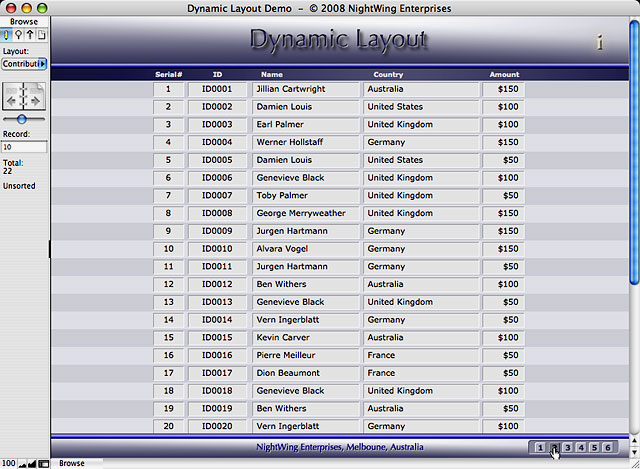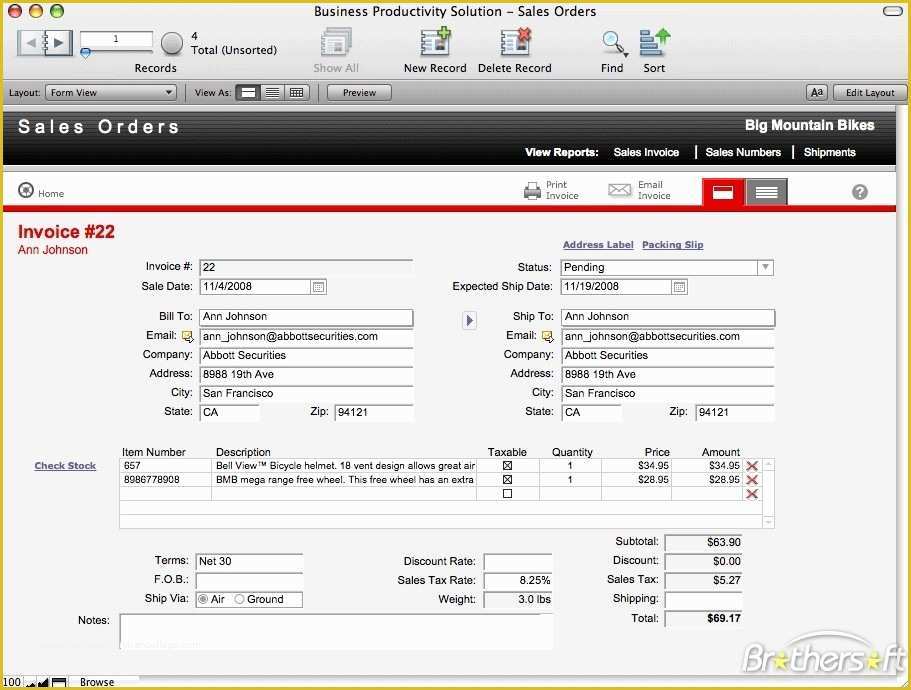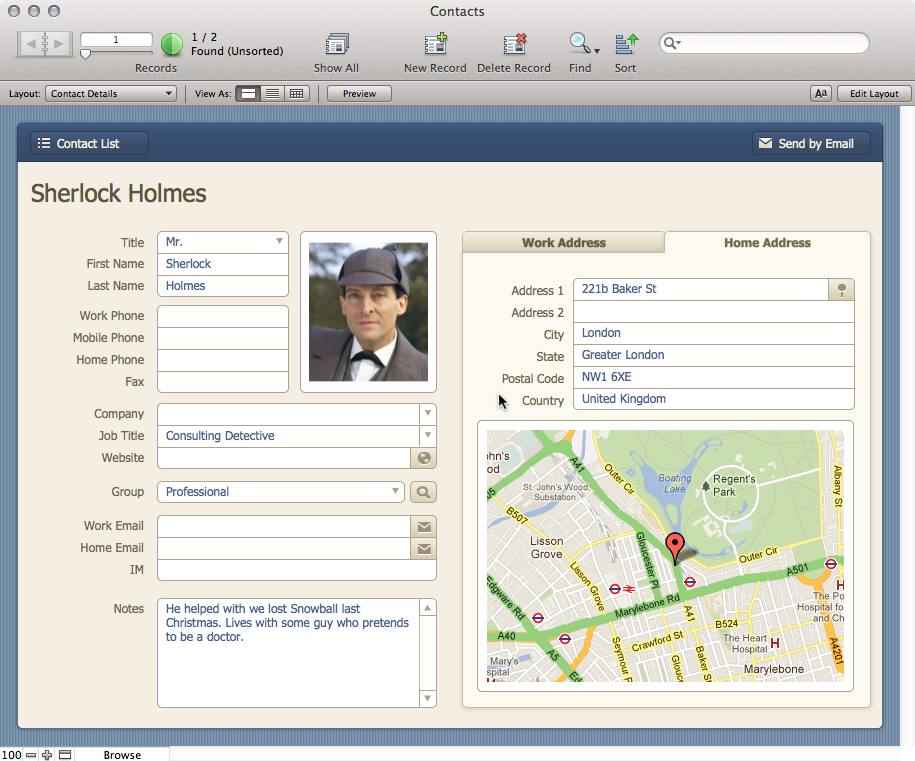
- Filemaker pro for mac layout template how to#
- Filemaker pro for mac layout template license key#
- Filemaker pro for mac layout template install#
- Filemaker pro for mac layout template software#
- Filemaker pro for mac layout template plus#
Filemaker pro for mac layout template software#
msi file, you can remove the Assisted Install.txt file.Ībout installing the required Microsoft components (Windows)įor FileMaker Pro to run, users must have specific versions of these Microsoft software components installed on their computers:
Filemaker pro for mac layout template license key#
msi installer (Windows)Įmbed the license key and personalization information directly in the installer. The installer reads personalization information from the file, and installation screens do not display. User interaction with the FileMaker Pro installer is kept to a minimum. Setting up silent assisted installations (Windows)Įdit the Assisted Install.txt file before performing a silent installation. Users provide the personalized information at the command line.

Installing from the command line with msiexec (Windows) This method lets you customize the installation and eliminates the need to distribute and administer license keys.

Installing FileMaker Pro using a networked volume (Windows)-Recommended methodĮdit Assisted Install.txt to standardize all networked FileMaker Pro installations. How personalization information is supplied to the installer
Filemaker pro for mac layout template install#
The installation method determines how the license key and other personalized information are entered when users install FileMaker Pro.įor some installation methods, you can edit the file, Assisted Install.txt, to provide the personalized information before users install the product. I also provide a few tips about working in Layout Mode with regards to making sure you create a consistent look across all of your layouts.Before you configure your installation, decide how you want to install the software.
Filemaker pro for mac layout template how to#
You'll establish a strong understanding of how to approach your hybrid layout design by watching this video. A design which would work on a Microsoft Surface Go, iPads and both Mac and Windows desktops. Figuring this out, however, does take a little bit of work.īy walking you through my own process, and the tool I use for creating a hybrid design, we'll get you familiar with hybrid layout design. It's a simple matter of finding the most ideal width and height which will account for the widest range of devices your solution will run on. One for the smaller form factor and the other as a hybrid approach for both tablet and desktop.įortunately, this is totally possible within FileMaker. I'd much rather limit myself to a maximum of two layouts for each possible view. This isn't something I'm personally fond of. If you decide to design for smartphone, tablet and desktop you could easily end up having to create three layouts for each possible view. In fact, these days, things are much more complex. There weren't as many variations as there is now. You just made one layout for each respective device. When mobile devices first became prevalent over a decade ago, it was a pretty easy process to design for both mobile and desktop. Windows: C:\Users\\AppData\Local\FileMaker\Extensions\Themes Macintosh: /Users//Library/Application Support/FileMaker/Extensions/Themes Windows: C:\Program Files\FileMaker\FileMaker Pro 19\Themes Macintosh: /Applications/FileMaker Pro.app/Contents/Resources/Themes Locations to find existing theme files are here. As long and you get the files into the right location with the right values, then you can modify any theme to your heart's content. In this video I walk through all the specifics related to customizing one of the existing themes. Even still, if you can't take the time to learn every single detail, you can still work with a theme which currently exists and simply tweak that theme to fit your specific needs.

The trick is knowing what's required, what can and can't be done and how the CSS translates to the FileMaker UI widgets. In the time since that initial release it may not be as commonly known, but the location still exists and you can certainly create (or modify) your own theme.

When FileMaker, now Claris, first introduced themes they likely had the intention of allowing users and/or third parties to create their own. They can be seen when extracting them from the clipboard, and if you know the right location to retrieve and store them, can be defined by any enthusiastic developer. Each element on your FileMaker layouts is defined by these CSS settings.
Filemaker pro for mac layout template plus#
FileMaker themes are simply a collection of the popular CSS standards plus a few extra attributes which are FileMaker specific.


 0 kommentar(er)
0 kommentar(er)
